Disclaimer: This post contains Amazon Affiliate links, so I receive a small contribution if you make a purchase through my links. You can find out more about my affiliates policy here.
Durham isn’t often a city I end up passing through, which is a bit of a shame as it’s home to one of the nicest embroidery studios I’ve ever seen, belonging to Tracy A Franklin.
Tracy is a Royal School of Needlework-trained embroider whose work is mind-bogglingly amazing. You can see some of her pieces on her Instagram page here. Her studio is tucked away in a lovely little area by the river called Fowler’s Yard, which is home to range of creative studios and stores, with a conveniently located wool shop for your knitting and fibre needs.
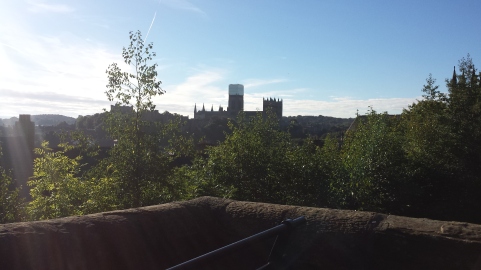
I was very fortunate as Tracy was kind enough to find me space on one of her classes so I could learn all about doing creative metalwork.
What’s the difference between goldwork and creative metalwork? That’s a question I’m not quite sure I know the answer to. Goldwork is a traditional embroidery technique and, particularly when it is taught by the Royal School of Needlework as part of their assessed programme, there are standard ways of starting and finishing threads, particular techniques etc. etc.
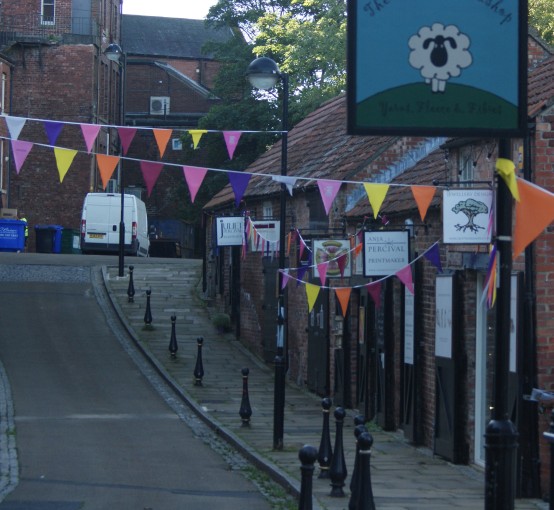
Creative metalwork essentially makes use of goldwork techniques with all those restrictions removed. While good technical skills will never good amiss, there is a certain joy in not having to worry about exactly how you secure your threads or indulging in the odd knot or two.
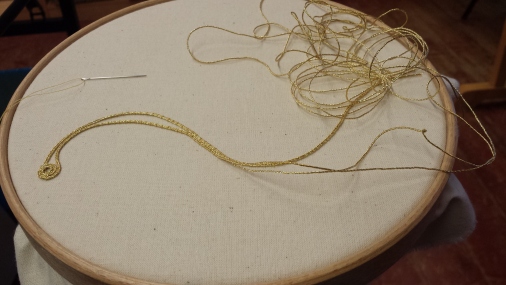
I had one solitary design line to start work with, which ironically I did manage to miss a section off as the pencil was quite faint, and after that, I was free to explore. The first technique I was using was couching down two different types of thread side by side and creating raised spirals as well. The challenge with couching, particularly for curved lines, is trying to create a smooth effect. It’s really easy to get notches and jagged parts where the couching stitches aren’t quite close enough together or you’ve not quite put enough tension on the thread but it can be a nice, mindless bit of stitching to do.

Metalwork often looks incredibly effective combined with other techniques, like silk shading, but one of the things that makes it such an interesting technique for me is the variety of textures you get. There are so many times of metallic thread you can get, from Japanese, to purl, to rococo, that all have their unique features. However, you’re not limited to just metals, you can use bits of fabric or leather as well.
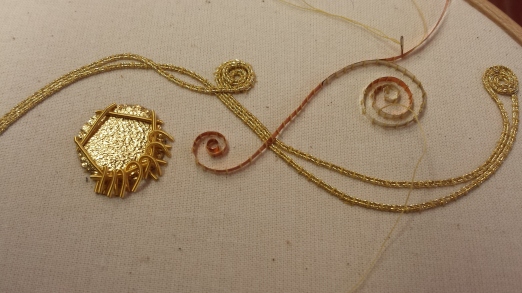
The circle is just a piece of leather cut out and attached flat with ‘frame’ stitched around it, worked in purl, with some added stitches looped around. Like a lot of ribbonwork, this makes for a really interesting looking feature that appears much harder to stitch than it actually is! The biggest challenge is trying to cut the pieces of purl to the right length…
Next was experimenting with some broad plate, which is more typically seen sewn flat. Although I was just couching this down, by having the plate orientated perpendicular to the fabric, there were some good technical challenges with not crushing it during sewing or transport and getting the tension sufficient to hold it without distorting the thread.
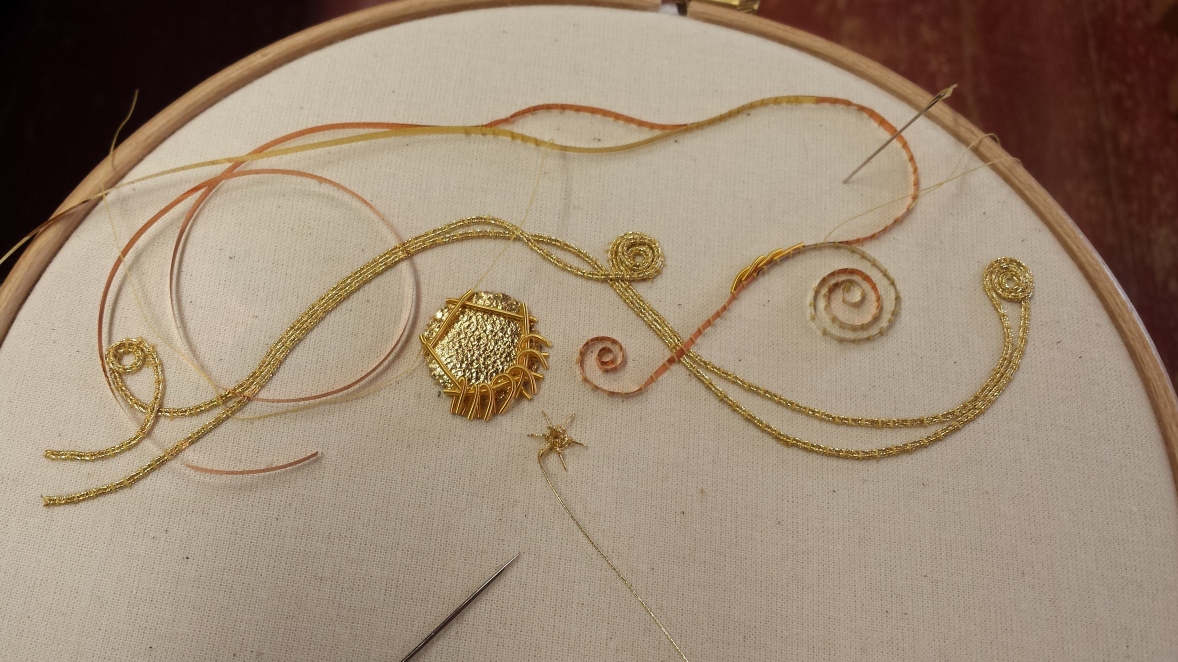
Overall, it was a thoroughly enjoyable day. I’ve mentioned before that for me, a perfect teacher is someone who can bestow all the technical knowledge and tricks you need while inspiring the confidence and creativity to experiment and Tracy does an absolutely wonderful job of that. I came away having learnt some new tricks and stitches but also with a load of ideas and enthusiasm that I just need to find the time to get onto calico.
If you’re interested in learning a bit more about creative metalwork or just enjoy looking at stunning photographs of embroidery, I highly recommend Tracy Franklin’s book on the subject, New Ideas in Goldwork. It’s filled with loads of stitch samples with some very creative ideas as well as finished pieces at the back. It isn’t so much a project book as a combination of a reference guide and stitch directory. The stitch diagrams are excellent and one thing I absolutely love is how they are presumably copies of Tracy’s hand drawn diagrams, rather than drawn on a computer. It just adds a lovely personal touch to the whole experience.
The plan will be just to fill the frame with a variety of other stitches, some inspired by Tracy’s book and hopefully some experimentation of my own. I suspect it might be a disaster, but I’d like to try and incorporate some needlelace in metallic threads too. Who says sampling can’t be fun?
That looks loads of fun! I did a contemporary whitework workshop with Tracey a while ago and it was excellent. So much fun to be able to play outside the rules!
LikeLiked by 1 person
It was great, looking forward to doing some more work on it. Definitely! Rules are made to be broken.
LikeLike
Wow. This all looks awesome and very complicated too!
LikeLike